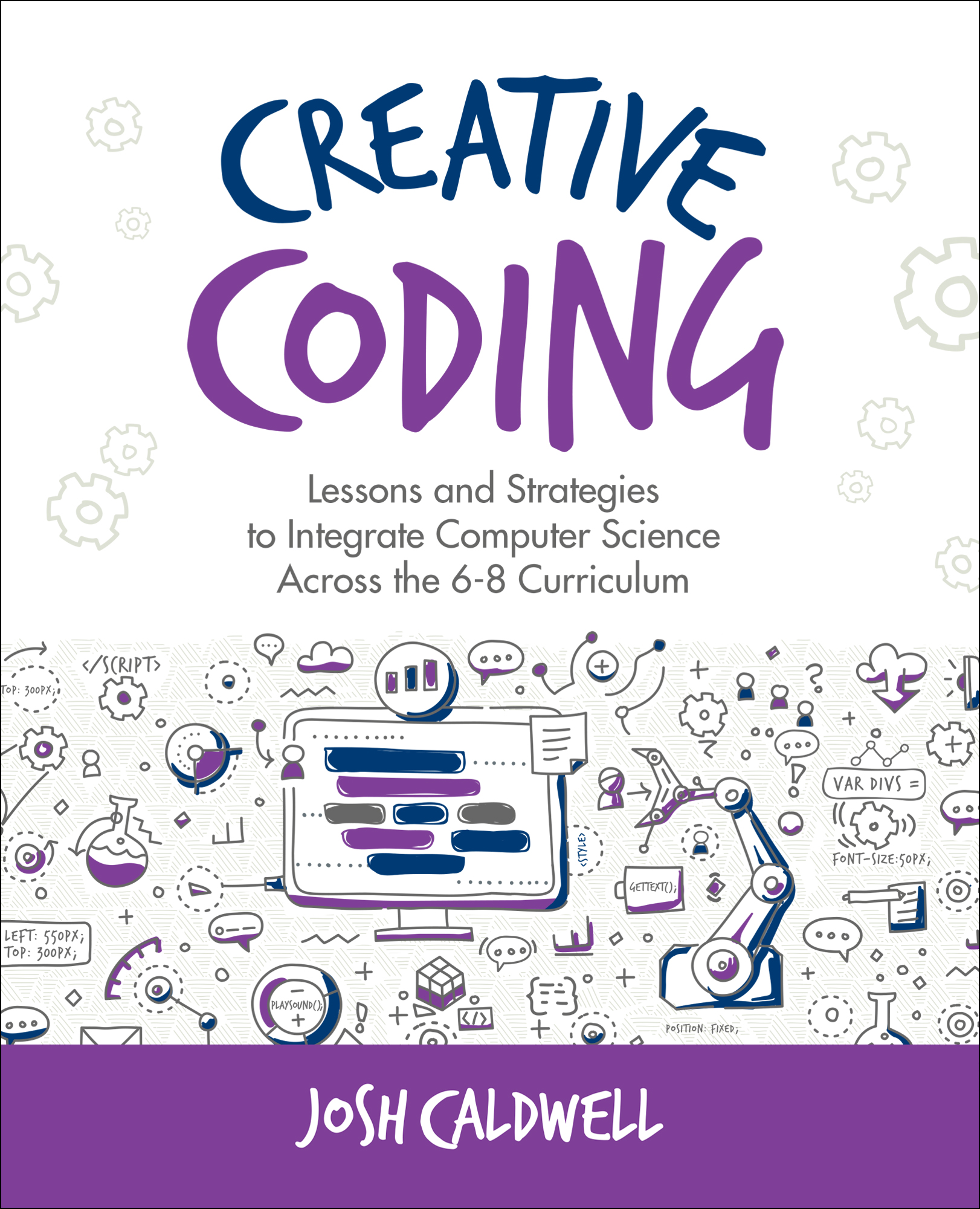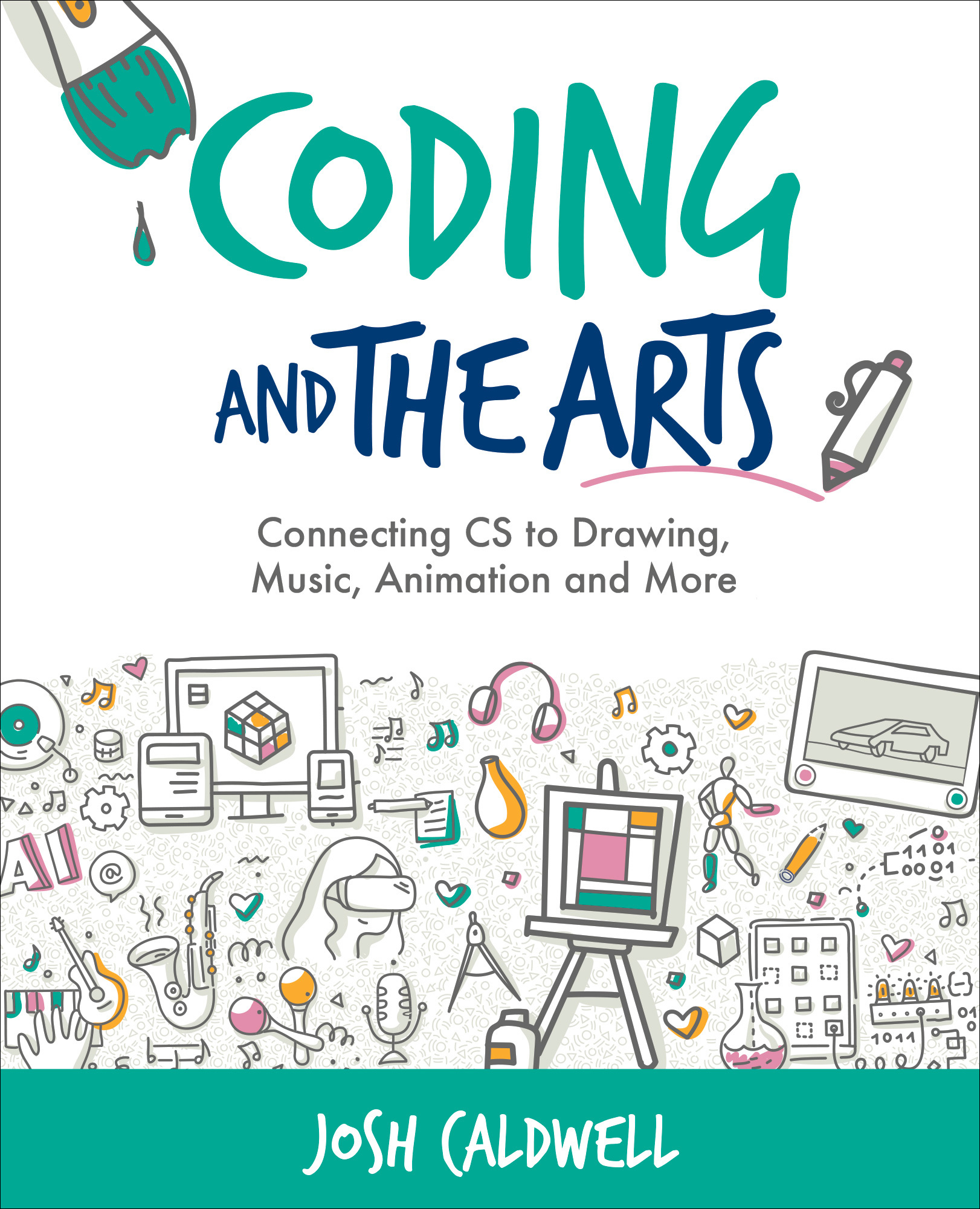This project is featured in chapter 3 of Coding and the Arts.
[Read More]Welcome to the website for my two books: Creative Coding and Coding and the Arts.
Here you’ll find supporting materials for lessons in both books, as well as additional resources for educators seeking to integrate Computer Science across the curriculum. I’ve made all of the materials on this site available freely, but if you find this content at all useful I’d be eternally grateful if you bought one (or both!) of my books.
Invent an Instrument
This project from chapter 4 of Coding and the Arts engages students in the cacophonous joy of making their own wild instruments. You can angle this project more towards the hardware or software side, or let each student decide where to take their projects.
[Read More]Cardboard Automata
This project, from chapter 4 of Coding and the Arts, can either be a really fun unplugged approach to get students thinking about how algorithms can be expressed physically, or you can plug it in using servos or motors.
[Read More]Make a Container
This project from featured chapter 4 of Coding and the Arts asks students to model a simple container either using extrusions or boolean operations.
[Read More]Evolving Shapes
This project from chapter 4 of Coding and the Arts is a really fun collaborative excercise. Students work together to create a 3d model by adding primitive shapes in turn.
[Read More]AI Backing Band
This project is featured in chapter 5 of Coding and the Arts. In it, students generate a track using AI to use with their own music.
[Read More]Teach the Machine
This project is featured in chapter 5 of Coding and the Arts, where it serves as an introduction to Teachable Machine and training a machine learning model. I find the latest version of Teachable Machine to be really intuitive, particularly when capturing training images from your webcam, but even with its ease of use I think the following introductory video is a super helpful bit of context setting for students.
You can definitely run this activity without any programming by focusing students on training and testing their models in Teachable Machine, but it’s expected that many students will want to do something with the model they’ve trained. The exemplars below all use this model that I trained with a few pieces of fruit and serve as a demonstration for students of how to wire up their trained models in programming environments that you may already be using in the classroom.
As with all things ML, this example model can only ever be as good as the data it was trained with, which happened to be whatever fruit I had on hand with my desk as a background. This inevitably means that it won’t be terribly accurate for a wide range of actual fruit in a wide range of environments. You can use this as a teachable moment for your students as well - the models that they train may work well for them, but will inevitably perform differently for other users in other environments.
[Read More]Living in a Virtual World
This project is featured in chapter 5 of Coding and the Arts.
[Read More]Chatty Snap Filters
This project is featured in chapter 5 of Coding and the Arts.
[Read More]Interactive Fiction
This project is featured in chapter 4 of Creative Coding, and is a great way to connect narrative storytelling to Computer Science. See the book for a detailed lesson plan.
[Read More]
